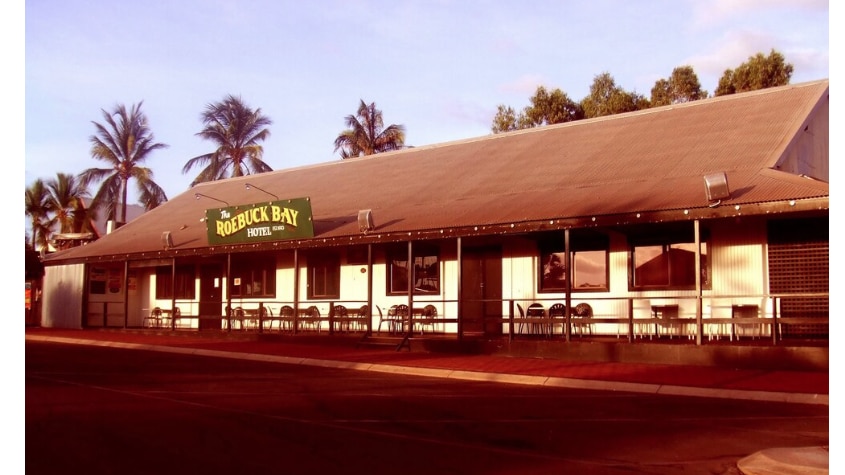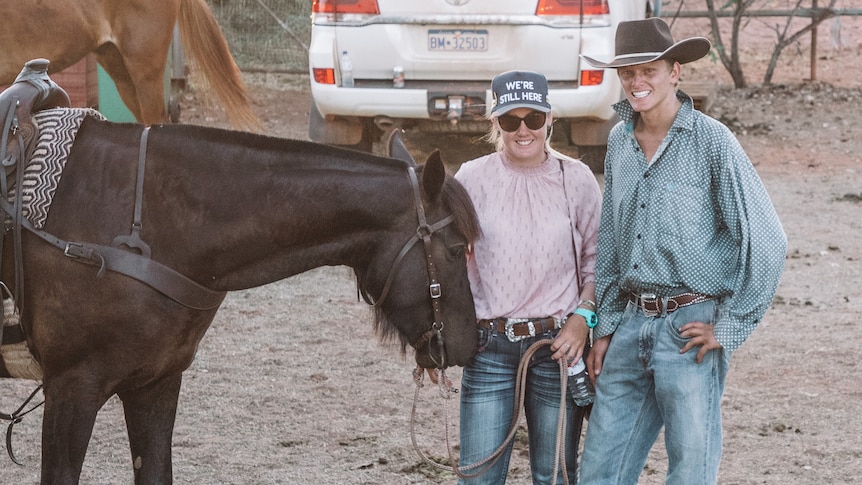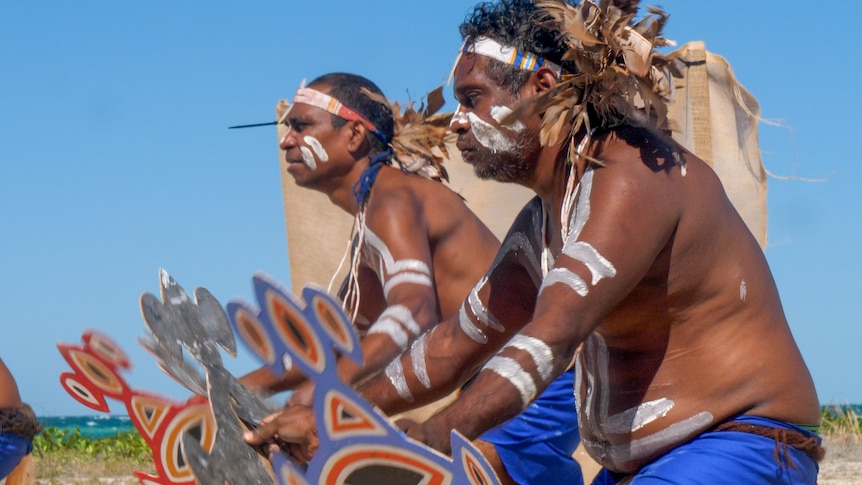The Roebuck Bay Hotel is one of the Kimberley’s most well-known landmarks, with its Thursday night wet T-shirt competitions as popular among tourists as a sunset camel ride on Cable Beach.
The infamous watering hole has survived cyclones, fires, world wars, bankruptcies, economic recessions and a depression, and most recently a global pandemic.
Now, it is on the market for the first time since 1985 as the current owners, the Coppin family, test the waters after a busy post-COVID boom in business.
The iconic pub is believed to have been the first building in Broome with flushing toilets and one of the first to have electricity.
And it has played host to brawls between indentured pearlers and the gross murder of a senior police officer in 1912.
For a brief period in the 1950s, patrons could even get a haircut at the bar while they sipped on a middy in exchange for a beer in return.
A dash of sin and debauchery
Indeed, ‘The Roey’, as it is affectionately known, has had a colorful 132-year history, which published Peter Coppin admits has involved plenty of “sin and debauchery”.
“It hasn’t changed in a long time. We still try and allow people to have fun,” he said.
“If you’re not having fun, you may as well go home.”
The Roebuck Bay Hotel had the humblest of beginnings, built on a bush block that was bought at auction with a reserve price of just £20 sterling in 1883 on country belonging to the Yawuru people.
Edwin William Streeter, a pearl merchant of London, went on to open the establishment in 1890 after buying the block from James William Hope.
The new pub was made of little more than a few sheets of tin.
Beers for the pearlers
Streeter had identified a potentially lucrative business opportunity in supplying liquor to the hundreds of hard-working laborers servicing the then-thriving pearl shell industry.
Most of the workers had arrived in Broome from Japan, Malaysia and Manila, traveling thousands of kilometers to an alien landscape of bright red pindan and sparkling blue waters.
After days at sea, they would seek refuge in the bars and gambling schools which lined the road now known as Dampier Terrace.
“The pearlers would come ashore and relax during the neeps,” Broome Historic Society member Ron Johnston said.
“Broome was the capital of the pearl shell industry of the world, which up until the introduction of plastics was the predominant button [material].
“Today, WA couldn’t do without royalties from the iron ore industry. In those early days it was pearl shell.”
The Roebuck was one of just two hotels in its first decade, but by the turn of the 20th century it was one of six.
“People love a beer and there was a quid in it so people built these little places for them,” Mr Johnston said.
“In the early days, pubs were probably just a couple of sheets of tin and a few poles, and people who sell grog.
“But those pubs have obviously disappeared.”
Today the Roey is the only original pearling-era pub that remains, with the others succumbing to the boom and bust waves of the local economy.
A national treasure
The National Trust, one of Australia’s chief conservation organisations, describes the beloved local institution as “legendary” in a statement of significance.
“[The Roebuck Bay Hotel] has always been a social and cultural focal point in Chinatown,” the statement reads.
Its ownership has passed through the hands of successive proprietors many from faraway places with curious stories.
Most recently it has been owned and operated by the Coppin family, when Peter’s father Brian purchased the property in 1985.
The younger Coppin, who grew up in and around the bar, describes the hotel as “the last piece of memorabilia which connects us to why Broome actually exists.”
“Pubs are probably the greatest place that captures living history,” Mr Coppin said.
“With every old pub being torn down or renovated to be something new and sterile you lose a piece of that history.
“But the history is not just in the bricks and mortar, it’s in the people, and it’s a time capsule of people new, old and everyone in between.
“You can go to museums, and you can see dummies, artifacts and replicas, but to walk into an old pub, that’s where you find real history.”
fun and scandal
The Coppins’ tenure has been characterized by equal parts fun and scandal including a ban on the wet T-shirt competition after a 16-year-old won the event in 2011.
The tradition was resumed two months later after its ‘immodesty license’ was reinstated.
It continues today, defining the #metoo era and changing social norms.
“Well, I always say it’s like an 80:20 rule, 80 per cent can’t believe it and have the greatest time and 20 per cent somehow can’t believe that it’s still going on and think it’s demeaning to women,” he said.
“Our biggest defenders of the wet T-shirt competition are actually women and most of them are in their 60s.”
Mr Coppin said the Roey had stayed true to some of its more sordid traditions while adding some new ones.
“We’ve still got skimpies. We’ve also had himpos or himpies,” he said.
“I don’t think we would have ever thought we’d have done a wet jockstrap, wet tradie or a wet drag queen competition but they’re now fairly prominent fixtures.
“You’ve got to try and keep true to your traditions and your heritage but at the same time you’ve got to try to change and roll with the times.”
Camaraderie and longevity
If you ask the regulars who frequent the infamous Roebuck Bay Hotel what the secret to the hotel’s longevity is, many will struggle to put their finger on exactly what brings them back to the bar stool.
Broome resident Craig Godfrey has been frequenting the Roey for the past 15 years, which he describes as a proud locals bar.
“[I love] the camaraderie with mates that I’ve been drinking here for years with,” he said.
Mr Godfrey said he had “too many memories” from his time in the pub, including “a couple of shockers”.
“What about the bar manager running around the street naked out the front… the accountant that was naked down the street and the police brought him back and said, ‘I think he’s one of yours’.
“There used to be a lot of that sort of stuff going on.”
.


